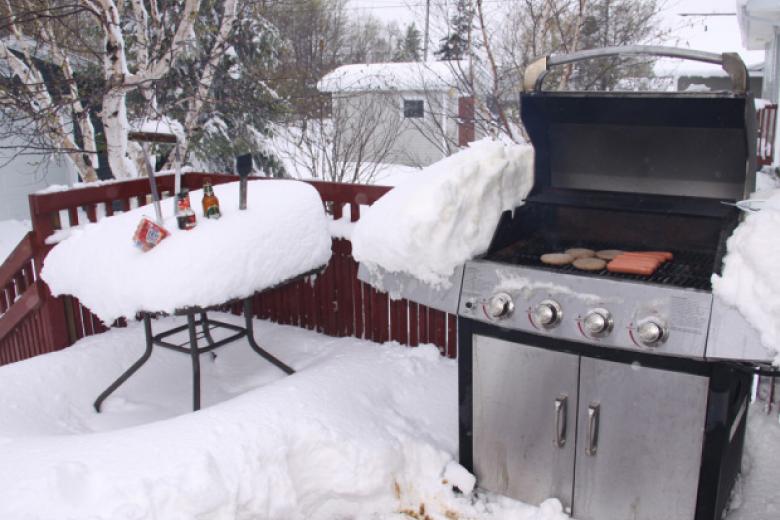
There seems to be two types of people around the office these days. The first kind are the ones complaining about the 9° F start to the day and dreading inevitable snow storms. The other type is me. Having been raised by a family of polar bears I enjoy the cold weather and think snow is beautiful. Part of why I enjoy the winter is I have learned how to avoid damaging my deck while at the same time keeping it free and clear of snow and ice. Follow these tips and you can avoid damage to your deck and enjoy a wonderful mid-January cook out.
First thing is to be prepared before it snows. Make sure you have removed any pots or other items from your deck. Also make sure your outdoor furniture is covered with water proof covers of some kind. You are also going to want to make sure your deck is free of leaves, mold, and other debris. It may be too late this year but it is generally a good idea to make sure your deck has been recently stained or sealed.
It seems pretty obvious but if it is light fluffy snow, skip the shovel. A simple soft bristle broom will work well in this situation. Most deck railings are above the deck a few inches which allows you to sweep the snow away before is causes any issues.
If Mother Nature really has a chip on her shoulder and covered your deck so that a broom is not an option choose wisely. Metal shovels or shovels with a metal blade will lead to spring repairs that you don’t want to have to do. If you use a plastic shovel, preferably one with a rubber blade, you are far less likely to damage the deck boards. Softer woods (i.e. redwood and cedar) are especially susceptible to this kind of damage. You can further reduce damage to the boards by shoveling with the grain. Shoveling with the boards will greatly decrease any potential damage. Never shovel across the boards.
Another danger that isn’t always considered is icicles. Not only can they put your eye out but large ones that break away and hit your outdoor living space can damage, dent, or scrape up the deck boards.
If you do not use your deck to enter or exit your home during the winter then removing all the snow is not 100% needed. However if it is a primary entrance or even an emergency egress then you want to make sure it is safe and free from ice. When deciding on ice removal there are several things to keep in mind. First off never, ever use anything to chop or chip the ice away. This activity will surely damage your deck. Also you should avoid sanding your deck, the large pebbles and grit frequently in sand can scratch and scar the wood of your deck. So this brings us to “ice melt”, which you can use but there are somethings you will need to watch out for. Using salt can corrode nails and joist hangers causing your deck to become unstable. In recent years I have seen ice melt that has been colored with dye, bear in mind this dye could stain the wood of your deck. Of course if you’re like myself and share your home with a pair of lovable dogs make sure you use pet friendly ice melt. The standard kind can cause your pets paws some real problems. Once the winter season is over if you used any kind of melting agent you should give your deck a good rinse to wash away any lingering residue.
If you follows these suggestions your deck should be in great shape and ready for good times for the whole family come spring time. Have a happy New Year and LET IT SNOW!